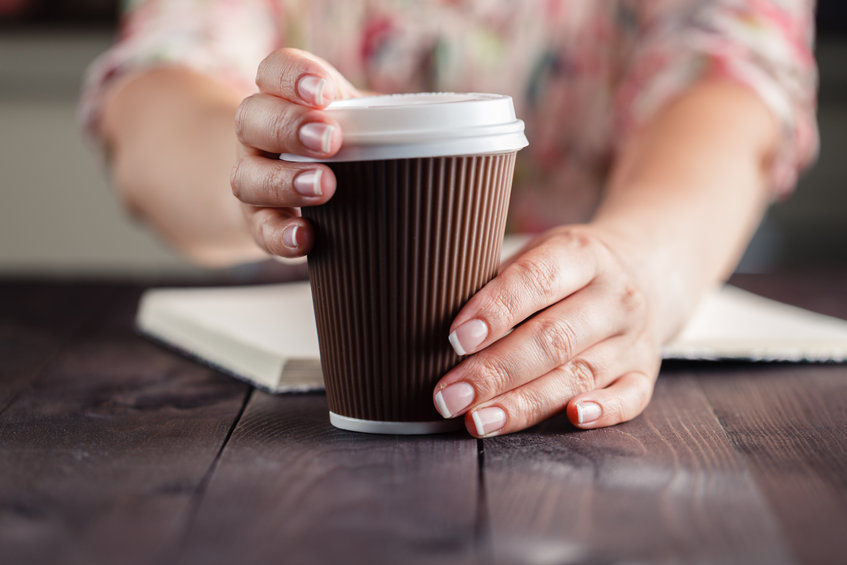Since the introduction of global single-use plastic bans, companies across the planet have been scrambling to find cost-effective, functional replacements for billions of single-use plastic products. Particularly in the area of disposable coffee cups.
Paper and cardboard have always been part of food packaging. New forms of packaging made of fibres are hitting the markets and calling themselves ‘plastic-free’, recyclable and compostable.
But when was the last time you made a cup out of a piece of paper or cardboard and successfully poured water into it without it completely falling to bits in your hand?
To make cardboard coffee cups behave like plastic cups, packaging companies have to add ‘stuff’ to them. They add water-repellent, non-stick coatings and wet strength additives, known as water dispersion coatings (WBDC) or aqueous coatings. These are applied to fibres to create a liquid-proof barrier. There is no need for a separate, solid plastic lining to stop liquids from seeping through.
Potentially, therefore, all paper cups in Australia and New Zealand could be made with aqueous linings in future. This would result in the use of approximately 800 tonnes of coatings.

So far so good. Or is it?
According to a report by BioPak Australia, there are currently no standards or regulations regarding aqueous or dispersion coatings, and no manufacturers are willing to disclose their formulations – so it’s clear that not all of these coatings are created equal.
So rather than assuming safety, shouldn’t we assume that aqueous coatings could contain harmful additives or sneaky microplastics? Particularly because, thanks to a lack of research, their toxicological properties are not fully understood.
Water-based coatings
The packaging industry likes to focus on the fact that they use a ‘water-based’ coating in their 100% plastic-free cups. The key to the issue lies in the ‘based’ part of ‘water-based coating’.
Aqueous coatings use thermoplastic chemistry whereby the water evaporates, and the remaining solids polymerise into a water-tight film.
Although water is used, the other half of the recipe, around 50%–55%, consists of raw materials which predominantly come from fossil fuel resources. Aqueous linings have grease- and water-repellent polymers and various other chemical additives suspended in a water base: acrylic polymers, and copolymers of acrylates such as ethyl acid acrylates and ethylene methacrylate, polyvinyl acetates, styrene butadiene copolymers, and polyolefins.
Polymer is another name for plastic.
So how can these products be called ‘plastic-free’ if they have plastic in them?
It all depends on how plastic is defined in law. It’s all very complicated, and it depends very much on where you are on the planet. However, the long and the short of it is that as a dispersed coating, a WBDC or aqueous coating isn’t capable of acting as the ‘main structural component’ of the cup or container, and therefore, magically, it’s not plastic.
According to one study, when paper cups with WBDC go through industrial composting, they leave behind thermoplastic microparticles. Compost aqueous lined cups and you are therefore adding microplastics to the soil, albeit at a low enough level to fall below the minimum plastic thresholds to pass compostable certification testing standards.
So yes, packaging companies can claim their aqueous coated products are plastic-free, recyclable and compostable. But that is according to the strict letter of the law, rather than the spirit.
Are these plastic-lined products safe?
Undoubtedly, WBDC has much smaller amounts of plastics than conventionally plastic-lined products. But surely it is important that we validate their safety before their continued use takes off. The impact of packaging waste on the environment can only be minimised by carefully selecting materials and understanding their footprint at every stage of their lifecycle.
The 800 tonnes of aqueous coatings on coffee cups are one product application, and there are many more aqueous-coated packaging formats being developed. Shouldn’t we therefore proceed with just a little caution? Anyhow …. food for thought.

